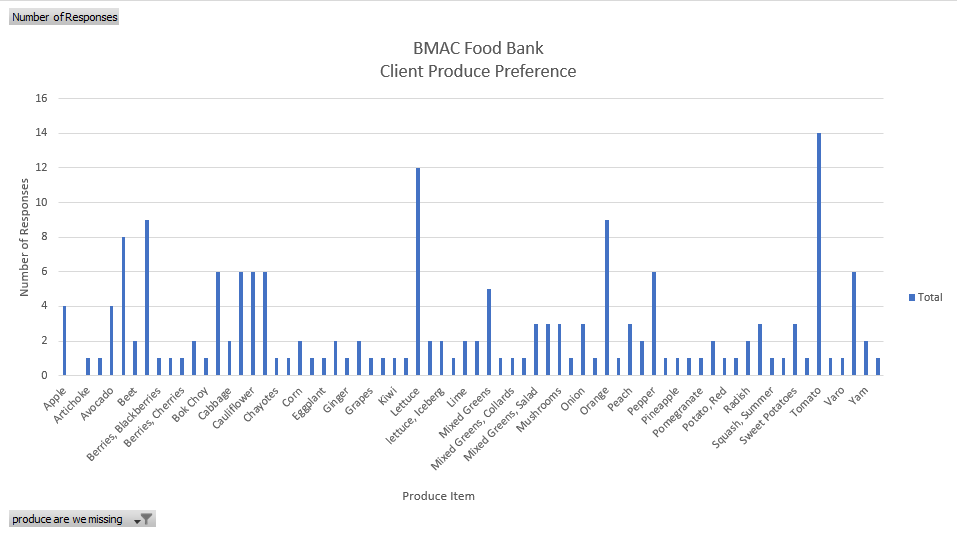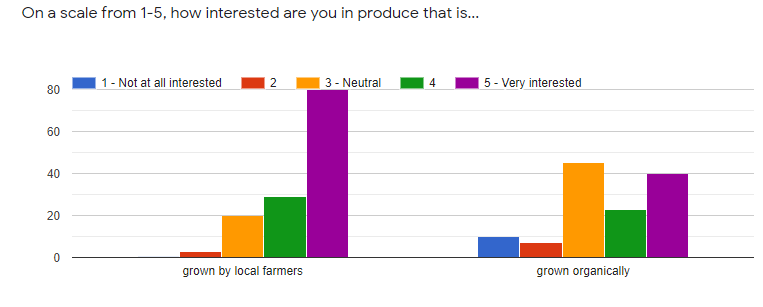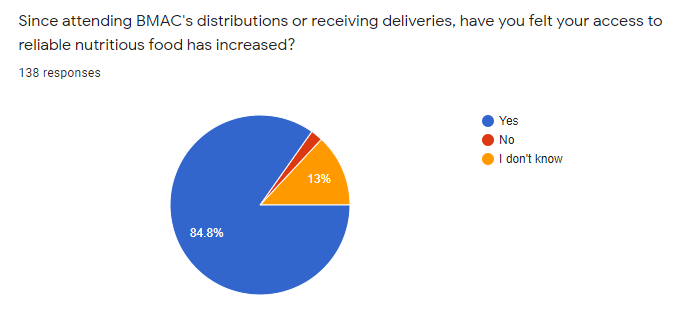
Tailoring Purchasing Plans to Client Preference
20 Jan 2022, by Admin in Harvest Blog, Blue Mountain Action CouncilDani Dolphin serves as the Community Food System VISTA at Blue Mountain Action Council in Walla Walla, WA. As the Food System Coordinator, Dani works closely with farmers, non-profit partners and community members in the Walla Walla Valley to combine efforts and strengthen the agricultural community. BMAC is a multipurpose nonprofit that aids in meeting the basic needs of people experiencing poverty through food, housing, and job assistance. The BMAC Food Bank is an integral link in establishing food security for those in need in the Walla Walla Valley.
By and large, purchasing decisions at food banks are based on necessity. Factors like availability, quantity, price point, shelf life, and storage space all go into the decision making. At the BMAC Food Bank, there is a shift in priorities occurring. Client choice has always been important but without direct input from clients, agencies make assumptions and estimates based on need. During the month of December, Harvest VISTA Dani traveled around Walla Walla County to survey clients and collect the data needed to inform purchasing decisions. This survey focused on the client’s wants rather than needs. Needs based buying is a staple of the emergency food system, supplying food that will sustain families in between food pantry visits including canned and boxed food. Shifting priorities from what can sustain a person to what can help people thrive is a crucial step in providing food with dignity. Everyone deserves healthy, nutritious food that enriches their life. Breaking the stigma of accessing food resources like a food bank is a difficult process, but addressing barriers people face and providing food that excites people helps lessen the shame associated with food insecurity.
The Client Survey, created by Harvest Against Hunger VISTA Ellis, covered a wide range of topics to create an overall understanding of client preference and barriers being experienced. Questions included how clients access food, prepare food, what foods they use most frequently, what foods they would like to receive, and what barriers they encounter when using fresh produce. With the 139 responses, the data from this survey will help inform a new lens with which to view purchasing decisions and center client choice.

Since the pandemic, fresh produce has become less affordable for 65.8% of respondents and 35.7% say they avoid leaving home to get food because of the pandemic. This information is incredibly important as BMAC seeks to fill those gaps and provide fresh produce during a time when people are unable to afford the increased cost. While 2/3rds of clients are unaware BMAC currently provides produce from local farms, 82.5% of respondents were interested in receiving local produce. Over the last five years, BMAC has focused on expanding relationships with local growers through Farm to Food Pantry. Increasing awareness of this program to clients, farmers and the community is critical for the growth of the initiative.
BMAC now has information on which foods clients are using most frequently and what foods clients want to receive. This information will inform the 2022 purchasing plan from local farmers as well as the ongoing purchases being made. Buying from local producers supports the Walla Walla Valley agricultural community and increases access to the freshest food for food bank clients. According to the Rodale Institute, local fruits and vegetables are more nutritious. “The longer fruit and veggies spend on a truck or in storage before being delivered to you, the greater the loss of vitamins, minerals, and other nutrients. Researchers at Montclair State University revealed that the vitamin C content of broccoli was cut in half when it was shipped from out of the country compared to when it was sourced locally.” Being able to provide food to clients from within ten miles of their home because of Walla Walla Valley’s incredibly rich agricultural community is beneficial to all entities involved.
This survey will help BMAC address barriers in utilizing that produce. The top responses on how to address barriers clients face include, 50.5% of respondents are looking for tips on how to store food, 49.5% are interested in recipes, 26.1% would like nutrition information and tips and 20.7% would like more prepared foods. In the future, establishing a database of recipes, nutritional tips and food storage information will be important to help clients use the food they receive to the best of their abilities. This survey is a step in the right direction and will help inform purchasing decisions and increase BMAC’s support for the local community and agricultural producers.

The information gathered from the Client Survey will help inform purchasing decisions as well as how to best serve clients moving forward. The goal of any hunger relief agency is to create a security net for people to access good, nutritious food. Though one survey will not change the world, bringing clients to the center of decision making will improve people’s lives and bring communities one step closer to a more just and equitable food system.


